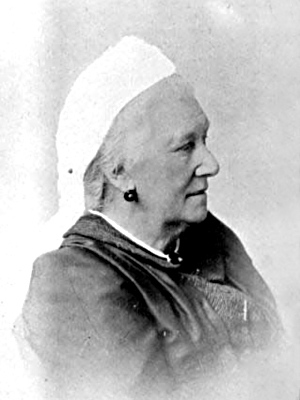Mary Müller facts for kids
Mary Ann Müller (born Wilson, later Griffiths; 22 September 1820 – 18 July 1901) was a very important person in New Zealand. She worked hard to get women the right to vote. She also fought for women's rights in general. Many people call her New Zealand's first champion for women's voting rights.
Contents
Mary Ann Müller's Story
Early Life and Moving to New Zealand
Mary Ann Müller was born in London, England, in 1820. In 1849, she moved to New Zealand with her two sons. She worked as a teacher in a town called Nelson for two years.
In 1851, she married Stephen Lunn Müller in Nelson. He was a surgeon and also from Britain.
Speaking Up for Women
In 1864, Mary Ann met Maria Rye, a woman who supported women's rights from Britain. This meeting made Mary Ann very interested in women's movements. She started to follow what was happening in Britain and the United States.
Mary Ann began writing articles about women's rights. Her friend, Charles Elliott, was the editor of a newspaper called the Nelson Examiner. He published her articles.
She used the pen name "Fémmina" when she wrote. This was because her husband was a local politician. He did not agree with her strong views on women's rights.
Her Important Pamphlet
In 1869, Mary Ann wrote a special booklet called An appeal to the men of New Zealand. She still used her pen name, "Fémmina." This booklet was the first of its kind in New Zealand. It talked about why women should have the right to vote.
Mary Ann believed that women needed to vote to help their country grow and improve. She also asked for old laws that treated women unfairly to be changed. She asked men, especially those in Parliament, to support women's right to vote.
Her booklet was very popular. It got a lot of attention in New Zealand and other countries. She even received a letter of support from a famous thinker named John Stuart Mill.
Making a Difference
Mary Ann Müller did not become a public speaker. This was because of her husband's job. But she did meet with William Fox, a politician, in private. She talked to him about her ideas.
Many of her ideas were included in a new law. This law was called the Married Women's Property Act of 1870. This law helped married women have more control over their own money and property.
Mary Ann Müller kept her identity a secret until 1898. This was seven years after her husband passed away. She died in Blenheim on 18 July 1901. She was buried in the Omaka Cemetery.
See also
In Spanish: Mary Müller para niños


